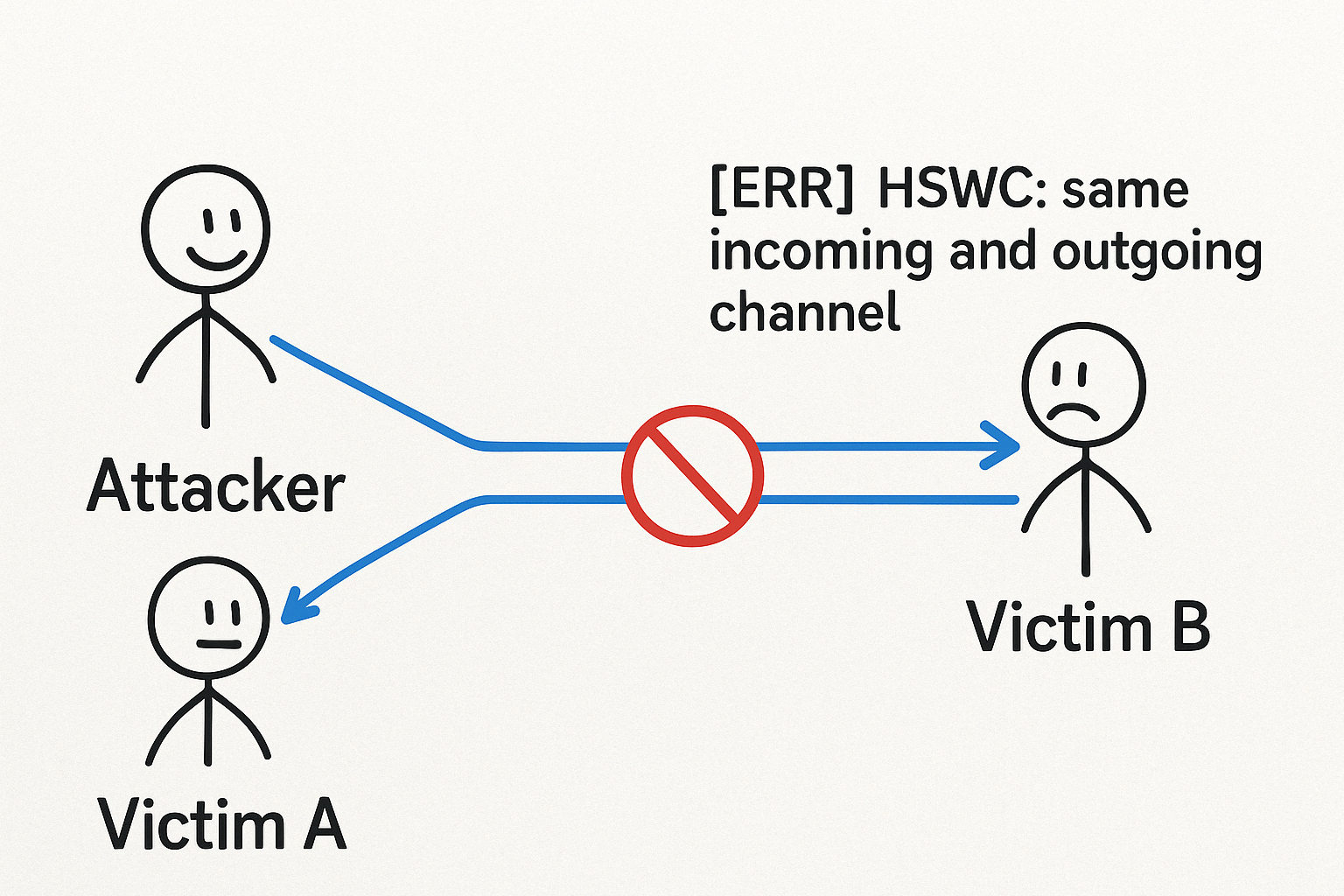
The Lightning Network (LN) is a dynamic and constantly evolving second-layer scaling solution for Bitcoin, designed to enable fast, low-cost transactions. Recently, the network has introduced the “[ERR] HSWC: same incoming and outgoing channel” error. This update has made many previously studied attacks, such as the LockDown Balance Availability Attack, much harder to execute.
In this post, we will delve into the core ideas behind this change, exploring what the error means and its impact on network security. By understanding these developments, we can appreciate the ongoing efforts to enhance the resilience and efficiency of Bitcoin transactions.
What the [ERR] HSWC: same incoming and outgoing channel Error Means
The “[ERR] HSWC: same incoming and outgoing channel” error occurs when a node attempts to route a payment through a channel that is both the incoming and outgoing channel for the HTLC (Hashed Time-Locked Contract). This means that the node is trying to use the same channel to both receive and send the payment, leading to failed transactions and disrupted channel operations.

In the diagram, we can see how this error manifests:
First, the Attacker initiates a new payment with a personalized route, sending the payment to Victim A on the first hop. Victim A follows the routing instructions received with the payment and forwards it to Victim B. At this point, Victim B receives the payment along with the routing instructions, which tell Victim B to send the payment back to Victim A. This routing attempt causes the “[ERR] HSWC: same incoming and outgoing channel” error on victim B because the same channel is being used for both incoming and outgoing payments. As a result, the transaction fails, and the channel operations are disrupted.
Prior to this change, such routing was possible, and it was a known vulnerability that could be exploited by attackers.
The Impact on Attacks
One of the most significant impacts of this change is on the security of the network. Several papers have described attacks that exploit this vulnerability. For example, the “LockDown: Balance Availability Attack Against Lightning Network Channels” (ResearchGate, 2020) outlines an attack where an adversary can manipulate channel balances to disrupt the network. This attack relies on the node’s ability to route HTLCs through the same channel, which can be exploited to cause disruptions. With the introduction of the “[ERR] HSWC: same incoming and outgoing channel” error, these attacks become much harder to execute.
With the introduction of the “[ERR] HSWC: same incoming and outgoing channel” error, these attacks become much harder to execute. The error prevents nodes from using the same channel for both incoming and outgoing payments, thereby closing off a critical vulnerability. As a result, attackers can no longer exploit this routing method to manipulate channel balances and disrupt the network.
This improvement enhances the overall security and reliability of the Lightning Network, making it more resilient against potential attacks. By addressing this vulnerability, the network can maintain its integrity and ensure the safe and efficient transfer of Bitcoin.
Conclusion
The introduction of the “[ERR] HSWC: same incoming and outgoing channel” error is a crucial step in enhancing the security and reliability of the Lightning Network. By preventing nodes from routing payments through the same channel, the network mitigates potential vulnerabilities and strengthens its overall resilience against attacks. As the Lightning Network continues to evolve, such improvements are essential for maintaining its integrity and ensuring the safe and efficient transfer of
